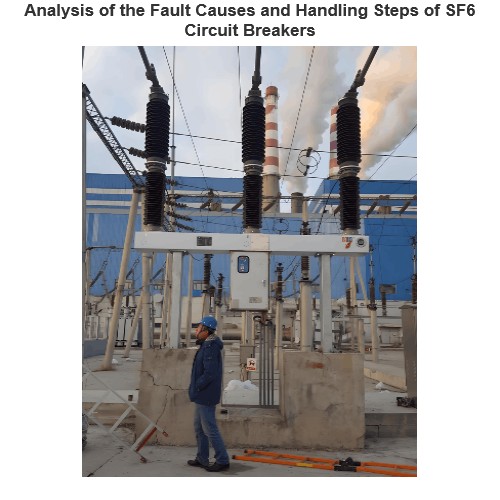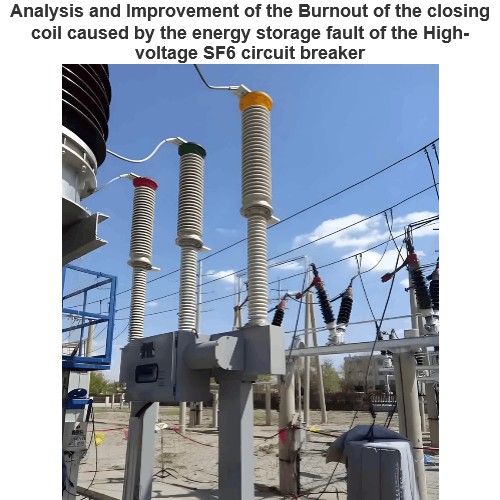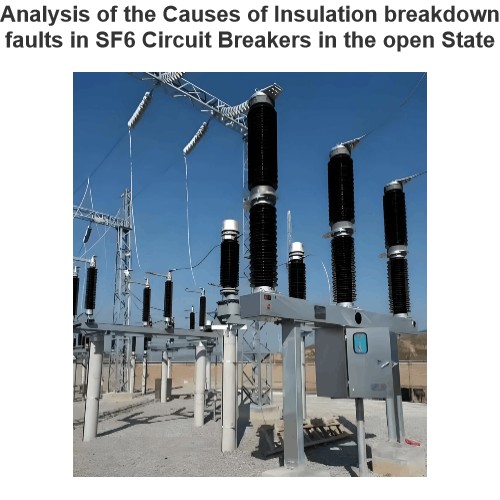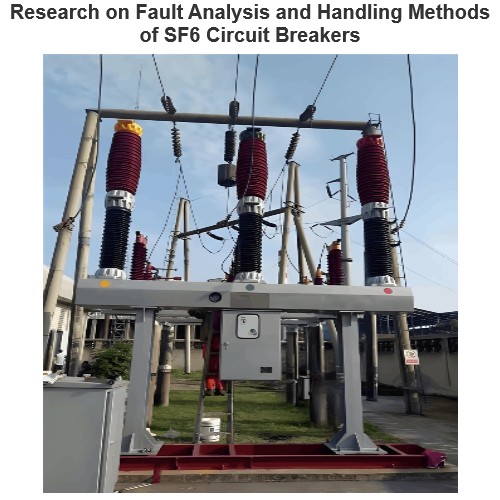I. Introduction
The abnormal operation status of the secondary circuit of the relay protection in a substation has a significant impact on the overall power system. On one hand, the secondary circuit of the relay protection is a crucial component of the power system, and its main function is to ensure the stable operation of the power system. When the operation status of the secondary circuit is abnormal, it may lead to a decrease in the stability of the power system and increase the likelihood of faults.
Moreover, an abnormal secondary circuit of the relay protection may cause the protection device to malfunction or fail to operate, thus threatening the safety of the power system. For example, when a short-circuit fault occurs in a line, if the abnormal secondary circuit of the relay protection prevents the protection device from cutting off the faulty line in a timely manner, it may lead to more serious consequences, such as equipment damage and fire. Therefore, it is extremely necessary to effectively detect the hidden faults in the circuit.
Xia Tongzhao et al. proposed a method for detecting hidden faults in the secondary circuit of the substation relay protection based on multi-parameter information. By collecting the information of multiple parameters, a comprehensive analysis of the operation status of the secondary circuit of the relay protection is carried out, which can more accurately detect hidden faults, improve the accuracy and reliability of fault detection, and help to timely identify and solve potential safety hazards. However, this method increases the complexity and computational amount of data processing to a certain extent.
Yang Yuhan proposed a method for detecting faults in the secondary circuit of the substation relay protection based on PLC technology. Taking advantage of the flexible programming, high reliability, and strong scalability of PLC technology, it improves the automation level and intelligence degree of fault detection, and can monitor the operation status of the secondary circuit in real time, which has a good application effect in improving the safety and stability of the power system. However, in the actual application stage, PLC technology requires corresponding hardware and software support, which will increase the cost and complexity of the power system.
Based on the above, this paper proposes a study on the automatic detection method of hidden faults in the relay protection circuit of secondary equipment in substations, and analyzes and verifies the performance of the designed detection method in a comparative test environment.
II. Design of the Automatic Detection Scheme for Hidden Faults in the Secondary Circuit of the Relay Protection
2.1 Analysis of the Fault Association Domain of the Secondary Circuit of the Relay Protection
In the process of dealing with the status issues of the secondary circuit of the relay protection, due to the interrelationships among different components [3]. Therefore, when there are hidden faults, the corresponding macroscopic manifestations are not limited to the specific fault location. In this regard, this paper first analyzes the fault association domain of the secondary circuit of the relay protection [4]. By establishing an appropriate function, the original fault detection problem is transformed into the calculation problem of the optimal fitness function of the objective function. In this way, according to the actual operation information of the secondary circuit of the relay protection, the status of the secondary circuit can be evaluated.
For the specific fault association domain of the secondary circuit of the relay protection, this paper takes the similarity between the actual operation information of the secondary circuit of the relay protection and the expected value as the measurement standard. When calculating the total current in the circuit, it may be necessary to add up the currents of all branches in the circuit, and at this time, the upper and lower limits of the summation correspond to the number of branch currents. According to the above method, the analysis of the fault association domain of the secondary circuit of the relay protection is realized, providing an implementation basis for the subsequent detection of hidden faults .
2.2 Detection of Hidden Faults in the Secondary Circuit of the Relay Protection

Tab.1 Comparison table of output results of characteristic value current values of circuit fault criteria of different degrees
I. Analysis of Test Results
As can be seen from the test results shown in Table 1, among the three different detection methods, the method for detecting hidden faults in the secondary circuit of substation relay protection based on multi - parameter information proposed in Literature [1] performs better in detecting higher - degree fault states. When the comprehensive error degree of the measurement circuit is less than 10.0%, the output result of the characteristic value of the circuit fault criterion is significantly lower, which has certain deficiencies for actual fault determination.
For the method for detecting faults in the secondary circuit of substation relay protection based on PLC technology proposed in Literature [2], the output results of the characteristic values of the overall circuit fault criterion are relatively stable, but there is room for improvement in the overall values.
In contrast, under the detection method designed in this paper, the output results of the characteristic values of the circuit fault criterion are always above 0.12 A, and the maximum value exceeds 0.22 A, which can effectively reflect the hidden fault state of the relay protection circuit of secondary equipment. Compared with the control group, it shows relatively obvious advantages in terms of stability and adaptability.
When analyzing the performance of the designed detection method, a model of the relay protection circuit of secondary equipment in a substation was built in PSCAD/EMTDC. During the specific setup stage, the actual protection type, electrical component model, and operating parameter configuration were fully considered.
II. Application Tests
2.1 Test Preparation
Based on a typical transmission line, a distance protection was configured and used as the relay protection circuit of secondary equipment. In terms of specific operating parameter configuration, the impedance range was set to 80% - 120% of the line impedance; the delay time was 0.1 s, and the operating time was 0.02 s; the operating characteristic adopted a quadrilateral characteristic to ensure reliable operation when a fault occurred within the protection range and reliable non - operation when a fault occurred outside the protection range; when the voltage was lower than 80% of the rated voltage, the protection was blocked to prevent misoperation at too low a voltage. The transformation ratio of the CT was 1000:1, and the rated current was set to 1.0 A. The transformation ratio of the PT was 10000:1, and the rated voltage was set to 100 kV. In terms of filter configuration, a low - pass filter was used, and the cut - off frequency was set to 500 Hz to reduce the impact of high - frequency noise on the protection.
2.2 Test Scheme
On the basis of the above - mentioned test environment, the method for detecting hidden faults in the secondary circuit of substation relay protection based on multi - parameter information proposed in Literature [1] and the method for detecting faults in the secondary circuit of substation relay protection based on PLC technology proposed in Literature [2] were taken as the control groups for the test. The detection results of the three different methods were tested under the same working conditions.
For the specific test working conditions, the current measurement circuit of the branch where the CT is located was set as the fault location, and the comprehensive error degrees of the measurement circuit of the branch where the CT is located were - 15%, - 10%, - 5%, + 5%, + 10%, and + 15% respectively. Based on this, the distribution of the characteristic values of the fault criterion for the fault current measurement circuit branch output by different detection methods was counted respectively.
2.3 Test Results and Analysis
The output results of the current values of the characteristic values of the circuit fault criterion for different degrees under different detection methods were counted respectively, and the specific data results are shown in Table 1.
III. Conclusion
The abnormality of the secondary circuit of relay protection is one of the most direct factors leading to the increase in energy loss in the power system. When the current transformer or voltage transformer in the secondary circuit fails, it will lead to measurement errors, thereby affecting the accuracy of electricity bill settlement.
This paper proposes a study on the automatic detection method of hidden faults in the relay protection circuit of secondary equipment in substations, which effectively realizes the accurate detection of secondary circuits of different degrees and has good practical application value. Through the research and design of the fault detection method for the relay protection circuit of secondary equipment in this paper, it is expected to provide valuable reference for the actual safety management of substations.
Combined with the fitness function of the fault association domain of the secondary circuit of the relay protection constructed in part 2.1, in the specific fault detection process, this paper solves the optimal value of the fitness function as the final identification result. According to the above method, the detection and analysis of hidden faults in the relay protection circuit of secondary equipment are realized.














